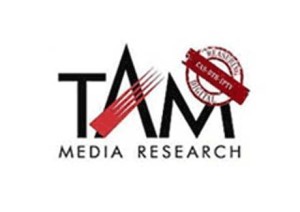Comment- In this case, the outcome of which was being watched with interest by the media, though the CCI has held TAM to be a dominant enterprise, which makes it vulnerable to future challenges, but has not found any abuse of the dominant position in the absence of any USO or regulatory obligations to spread the area of survey for declaring TRP to rural or semi-urban Tier-III towns. Another concern is that the order having been passed under section 26(8) of the Act, no appeal can be filed in the Appellate Tribunal.
The Competition Commission of India (CCI) by its recent order dated February 25, 2016 has closed the complaint filed by Prasar Bharti (public broadcaster through Doordarshan channel) against the television audience measurement services agency, TAM Media Research Private Limited (TAM), alleging abuse of dominant position in relation to the procedure adopted for measurement of Television Rating Points (TRPs) or Television Viewership Ratings (TVR) since 2011.
As per the complaint, the methodology adopted by TAM to measure TRP includes meters was defective since it installed “people meter’ in the TVs in selected areas limited to the cities with a population of 1 Lakh or more. TAM has installed a total of such 8000 people meters throughout the country, which, according to Prasar Bharti represented a narrow statistical base and puts the DD Channels in a disadvantageous position giving undue advantage to private broadcasters who then make programs suitable only for the urban audience/viewers .It was alleged that the TRP/TVR generated by TAM actually underestimates the actual viewership of Doordarshan as it primarily is being watched by the population in rural areas.
The complaint was investigated by the Director General (DG). The DG Report considered that the “market for provision of services for audience measurement for channels and programs on television in India” as the relevant market , observing that audience measurement of other media platforms like print, radio, and internet are not substitutes of audience measurement of TV. Within this market, the DG Report concluded that TAM enjoys 100% market share (monopoly) since 2011, and thus enjoys a dominant position.
The DG Report then found that the exclusion of semi-urban and rural areas from the sample size for the survey results in imposition of unfair and discriminatory conditions on those broadcasters who have channels and programs focused to rural market as they are not duly compensated by the advertisers with enough advertisements resulting into unfair condition and denial of market access to Prasar Bharti , which, constitutes an abuse of dominant position by TAM, in violation of Section 4(2) (a) (i) and 4(2) (c) of the Competition Act, 2002 (Act). Secondly, the DG Report noted that the conduct of TAM in charging higher annual subscription fees from advertisers and media agencies to provide TV viewership data amounts to imposition of discriminatory price in violation of the provisions of Section 4(2)(a)(ii) of the Act. Thirdly, since TAM has been the only user of such measurement meters in India, this has led to the limiting of technology and scientific development for manufacturing of such meters amounting to infringement of Section 4(2)(b)(ii) of the Act.
The CCI after considering the objections of TAM to the findings in the DG report during the subsequent Inquiry, agreed with the delineation of the relevant market by the DG as the market for audience measurement for channels and programmes on television in India’ and also with the finding on the dominant position of TAM in that market . CCI also observed that the customers of TAM, broadcaster and advertisers, are completely dependent on services provided by the OP as it plays a crucial role in the decision making process and had very weak countervailing buyer power to exert any competitive constraint on TAM. Thus, the CCI also concluded that TAM is a dominant position in the relevant market.
However, the CCI differed with the DG on the alleged abuse of such dominant position by TAM. It observed that as regards the non-coverage of viewership in rural areas in measurement of audience viewership, TAM has clearly disclosed to its stakeholders that its data is largely representative of viewing preferences of the urban and semi-urban population. Further, TAM was under no obligation to extend its survey size area to the rural areas in the absence of any contract or regulatory requirement. Hence, no unfair and discriminatory condition was imposed on any subscriber on this account by TAM.
As regards allegation of discriminatory pricing by TAM, the CCI noted that the broadcaster and advertising agencies/advertisers are not similarly placed subscribers of TAM. Since they are differently situated, the allegation that charging higher subscription rate on broadcasters was discriminatory does not hold any ground.
The CCI, therefore, closed the complaint with a finding that no case of abuse of dominant position was found against TAM.









